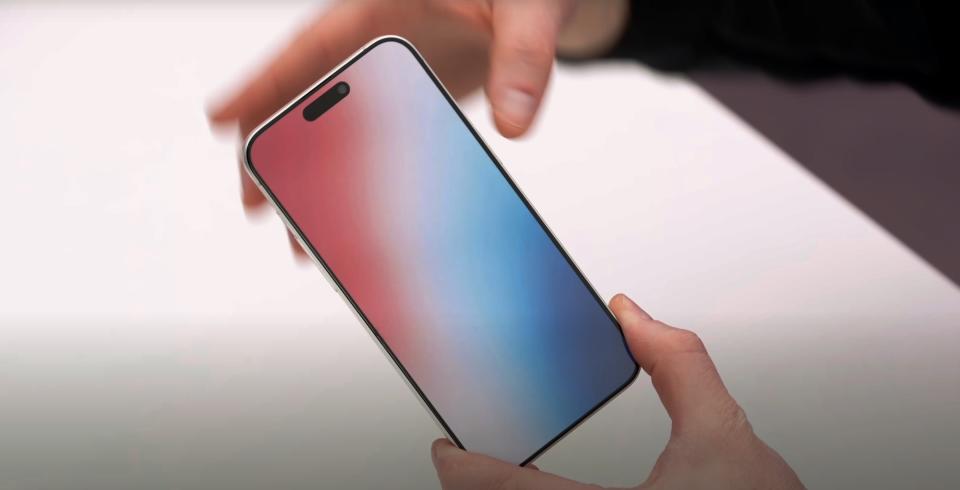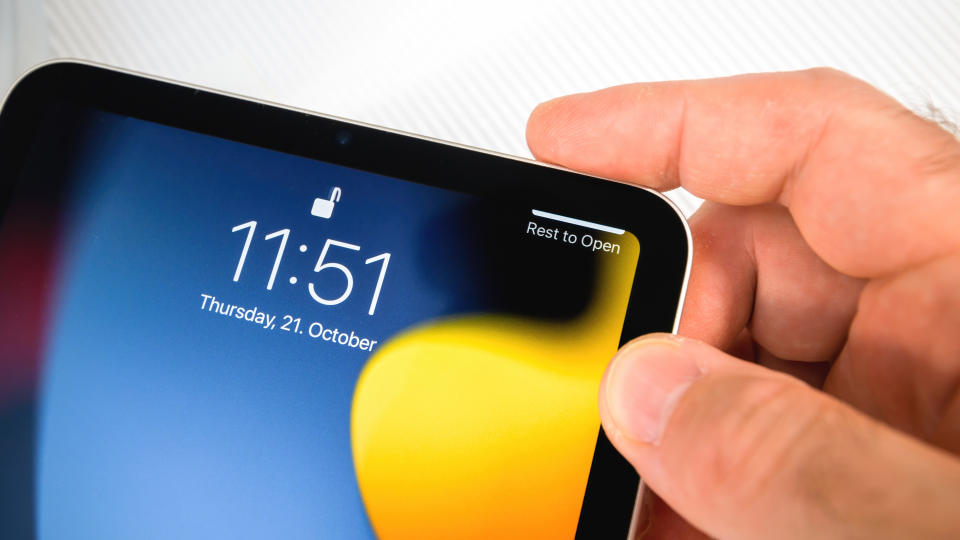
There seems to be a hefty number of upgrades heading to the iPhone 15 and iPhone 15 Pro series later this year. From USB-C and a universal Dynamic Island experience to titanium frames for the Pros, it should prove to be quite the year for the new iPhone. Unfortunately there’s still one thing the phones seem hell bent on missing out on: Touch ID.
Apple’s fingerprint scanner has been missing from flagship iPhones ever since the launch of the iPhone X back in 2017. The argument was that because Apple had developed Face ID, which was touted as being significantly more secure, then Touch ID was totally unnecessary. It’s also speculated that it saves space inside the phone, which can be used for other things.
But even as phone makers transitioned towards more streamlined fingerprint scanners, hiding them under the display or in the power button, the iPhone has stubbornly gone without. The iPhone 15 will apparently be no exception to this, and that’s a very disappointing turn of events.
Face ID is way more awkward than a fingerprint scanner
I’m not a regular iPhone user, and admit that quite regularly, but I’ve still had plenty of experience with Apple’s flagship phones. To put it bluntly, I do not like Face ID and much prefer the convenience of a fingerprint scanner.
That may sound strange, considering Face ID only needs you to look at your iPhone screen and swipe up. But I always find it awkward, and slow, especially since Face ID is designed to only work when you’re actively looking at the phone. Close your eyes, look away from the screen, or display any level of inattentiveness and your phone won’t unlock.
I can see the appeal of this, particularly since it stops people from unlocking your phone while you sleep. But I’ve found that the in-display fingerprint scanner on my Pixel 6 Pro is a heck a lot more convenient. In fact, a combination of familiarity and muscle memory means I can unlock the phone without even looking at it — which ensures the screen is unlocked and ready to go as soon as I need it.
The lack of Touch ID isn’t one of the things preventing me from switching away from Android, as there are other issues I’d rather see Apple deal with first. But the lack of what feels like such a basic feature would make me hesitate, especially since there’s no practical reason why it couldn’t be included.
Touch ID and Face ID can coexist

Face ID launched at a time when in-display fingerprint sensors were a nice idea limited to concept phones, rather than mass-produced devices you could buy. But that was almost six years ago, and things have changed a lot since then. Not only are in-display fingerprint sensors available on virtually every premium smartphone, there’s been a rise in the number of physical sensors stored in other buttons — notably the power button.
The latter of which has even been adopted by Apple for various iPad models. Face ID is exclusive to the iPad Pro series, and the old-school home button has been slowly dying off for the past few years. So the cheaper iPad models arrived with Touch ID home buttons.
But there’s no reason why iPhones couldn’t offer both options. Especially now that Apple launched Dynamic Island and showed the display notch can be used for something other than housing camera sensors.
In the past Apple was very much a “you’ll have what we give you” type of company, but that’s softened up in recent years — especially where user personalization is involved. There’s no reason why it couldn’t go a step further and let users decide whether they want to use Face ID, Touch ID or disable biometric security altogether.
Die hard Apple users, and indeed Apple itself, will likely produce statistics about Face ID and how much more secure it is than Touch ID ever was. I can't argue with that, although even the level of security afforded by Face ID is dependent on how secure your device’s passcode is. All the best biometric security in the world can’t change the fact that both Face ID and Touch ID could be overridden by a braindead user that uses the passcode “1234” — or worse.
Bottom line
Apple has long been a company that does its own thing, provided it works, regardless of whatever anyone else is doing. That’s no doubt why Lightning stuck around for so long during the rise of USB-C, and presumably this is why Touch ID has been absent from the iPhone for so long.
There’s clearly some demand for Touch ID to make a comeback, otherwise we wouldn’t hear rumors about its possible comeback every darn year. But whether Apple cares is another matter, particularly since Face ID has been doing a pretty reasonable job over the past several years. We can certainly hope that Apple caves and decides people should be able to decide what kind of security their phone has to offer, but for now I certainly wouldn’t hold my breath.
But who knows, maybe Apple will surprise us at the Apple September event, when the iPhone 15 series is finally unveiled. It wouldn’t be the first time the company pulled a fast one on us.
More from Tom's Guide
iPhone 15 probably won't have Touch ID — and that's a huge shame - Yahoo Life
Read More

No comments:
Post a Comment